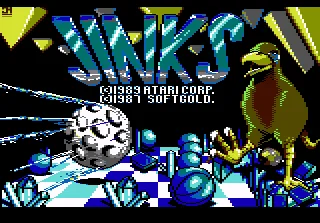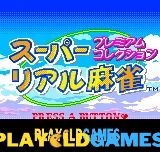Marios Early Years Fun With Letters2.txt
The Origins of Mario's Early Years: Fun with Letters
Mario's Early Years: Fun with Letters is an educational game for children developed by The Software Toolworks and released for the Super Nintendo Entertainment System (SNES) in 1994. The game is part of a series of educational games that were created to teach young children basic skills like reading, writing, and math. Let's take a closer look at the history of Mario's Early Years: Fun with Letters.
The Educational Game Craze of the 1990s
In the early 1990s, educational games for children were becoming increasingly popular. Parents were looking for ways to use their video game consoles for more than just entertainment, and game developers were eager to capitalize on this trend. Companies like The Software Toolworks began developing a wide range of educational games for various platforms, including the SNES.
The Development of Mario's Early Years: Fun with Letters
Mario's Early Years: Fun with Letters was developed by The Software Toolworks with the goal of teaching children basic reading and writing skills. The game features a variety of activities, such as letter matching, word recognition, and sentence formation, all centered around the world of Mario and his friends.
The game's developers worked closely with educational experts to create a fun and engaging experience that would help children learn while having fun. They also incorporated elements from popular Mario games, such as the music and graphics, to make the game more appealing to young children.
The Reception of Mario's Early Years: Fun with Letters
Mario's Early Years: Fun with Letters was well-received by both parents and critics when it was released in 1994. The game's colorful graphics, catchy music, and engaging activities made it a hit with young children. Parents were also pleased with the game's educational content, which helped their children learn basic reading and writing skills in a fun and interactive way.
The Legacy of Mario's Early Years: Fun with Letters
Mario's Early Years: Fun with Letters is part of a larger series of educational games featuring Mario and his friends, including Fun with Numbers and Fun with Shapes. The series was popular throughout the 1990s and early 2000s and helped establish the Super Nintendo as a platform for educational games.
Today, Mario's Early Years: Fun with Letters is remembered as a classic educational game that helped countless young children learn basic reading and writing skills in a fun and engaging way. Its legacy lives on in the many educational games that continue to be developed for modern video game consoles and mobile devices.
Conclusion
Mario's Early Years: Fun with Letters is an educational game that was developed to teach young children basic reading and writing skills. The game was well-received by both parents and critics and helped establish the Super Nintendo as a platform for educational games. Today, the game is remembered as a classic example of how video games can be used to teach and educate children in a fun and interactive way.
The Levels of Mario's Early Years: Fun with Letters
Mario's Early Years: Fun with Letters is an educational game developed by The Software Toolworks and released for the Super Nintendo Entertainment System (SNES) in 1994. The game features a variety of activities designed to teach young children basic reading and writing skills. But just how many levels are there in Mario's Early Years: Fun with Letters? Let's find out.
The Activities in Mario's Early Years: Fun with Letters
Mario's Early Years: Fun with Letters features a total of six activities, each with its own set of challenges and objectives. The six activities in the game are as follows:
1. Letter Puzzle
In this activity, the player is presented with a puzzle that features a picture of a character or object from the Mario universe. The puzzle is missing one or more letters, and the player must choose the correct letter(s) to complete the puzzle. This activity helps children learn letter recognition and spelling.
2. Missing Letter
In this activity, the player is presented with a sentence with one letter missing. The player must choose the correct letter to complete the sentence. This activity helps children learn letter recognition, spelling, and sentence formation.
3. Matching Words
In this activity, the player is presented with a set of words on the screen. The player must choose the word that matches a given picture. This activity helps children learn word recognition and vocabulary.
4. Word Puzzle
In this activity, the player is presented with a puzzle that features a picture of a character or object from the Mario universe. The puzzle is missing one or more words, and the player must choose the correct word(s) to complete the puzzle. This activity helps children learn word recognition, spelling, and vocabulary.
5. Letter Machine
In this activity, the player is presented with a machine that produces letters. The machine produces a sequence of letters, and the player must choose the correct letter that comes next in the sequence. This activity helps children learn letter recognition and sequencing.
6. Building Words
In this activity, the player is presented with a set of letters and a picture of an object or character from the Mario universe. The player must use the letters to spell the name of the object or character. This activity helps children learn spelling, word formation, and vocabulary.
Each activity is designed to help children learn basic reading and writing skills in a fun and engaging way. The activities gradually increase in difficulty as the player progresses through the game.
The Length of the Game
Mario's Early Years: Fun with Letters can take anywhere from 2 to 5 hours to complete, depending on the player's skill level and how much time they spend on each activity. The game also features a save system that allows players to pick up where they left off later.
Conclusion
Mario's Early Years: Fun with Letters features six activities designed to teach young children basic reading and writing skills. The activities gradually increase in difficulty as the player progresses through the game. While the game is relatively short, it provides a fun and engaging way for young children to learn basic literacy skills. With its colorful graphics and catchy music, Mario's Early Years: Fun with Letters is a classic example of how video games can be used to teach and educate children in a fun and interactive way.
The Difficulty of Mario's Early Years: Fun with Letters
The Target Audience
Mario's Early Years: Fun with Letters is designed for young children between the ages of 3 and 6. The game's activities are relatively simple and easy to understand, making it accessible to young children who may not have much experience with video games.
The Learning Curve
The game's activities are designed to gradually increase in difficulty as the player progresses through the game. The early activities are relatively simple, focusing on basic letter recognition and spelling. As the player progresses, the activities become more challenging, incorporating sentence formation, word recognition, and vocabulary.
The Pace of the Game
Mario's Early Years: Fun with Letters is a relatively slow-paced game. The activities are designed to be engaging and fun, but they are not particularly fast-paced or action-packed. This slower pace may be more appealing to young children who are still developing their motor skills and may not be able to keep up with more fast-paced games.
The Length of the Game
Mario's Early Years: Fun with Letters is a relatively short game, taking anywhere from 2 to 5 hours to complete, depending on the player's skill level and how much time they spend on each activity. The game's activities are designed to be replayable, so players can continue to practice and improve their skills even after completing the game.
The Multiplayer Options in Mario's Early Years: Fun with Letters
The Single-Player Experience
Mario's Early Years: Fun with Letters is primarily a single-player game. The activities in the game are designed for one player to complete, and there is no multiplayer mode available. However, the game does offer a few options for multiple players to participate.
The Shared Learning Experience
While there is no true multiplayer mode in Mario's Early Years: Fun with Letters, the game can still be enjoyed as a shared learning experience. Parents or caregivers can sit with young children and help them navigate through the activities, providing guidance and encouragement as needed. This shared learning experience can help children develop a love of learning and help parents and caregivers feel more connected to their children.
The Interactive Learning Experience
In addition to the shared learning experience, Mario's Early Years: Fun with Letters also offers an interactive learning experience. The game's activities are designed to be engaging and fun, encouraging children to explore and learn in a hands-on way. Parents or caregivers can participate in this interactive learning experience by providing feedback and support as children work through the activities.
Tips and Hints for Playing Mario's Early Years: Fun with Letters
Mario's Early Years: Fun with Letters is an educational game developed by The Software Toolworks and released for the Super Nintendo Entertainment System (SNES) in 1994. The game is designed to teach young children basic reading and writing skills through a variety of fun and engaging activities. Here are some tips and hints to help you get the most out of the game.
Tip #1: Start with the Easy Activities
The activities in Mario's Early Years: Fun with Letters gradually increase in difficulty as the player progresses through the game. To get the most out of the game, it's a good idea to start with the easier activities, such as Letter Puzzle and Missing Letter. These activities focus on basic letter recognition and spelling and are a great way to build a strong foundation for more advanced activities.
Tip #2: Use the Help Feature
If you're having trouble with a particular activity, don't be afraid to use the game's Help feature. The Help feature provides helpful hints and tips to guide you through the activity and can be accessed at any time by pressing the Y button on the SNES controller.
Tip #3: Repeat Activities to Improve Your Skills
The activities in Mario's Early Years: Fun with Letters are designed to be replayable, allowing players to continue practicing and improving their skills even after completing the game. If you're having trouble with a particular activity, try repeating it a few times to improve your skills and gain a better understanding of the concepts being taught.
Tip #4: Use Positive Reinforcement
Young children respond well to positive reinforcement, so be sure to praise them for their successes as they play through the game. This can help them stay motivated and engaged as they work through the activities.
Tip #5: Play the Game Together
Playing Mario's Early Years: Fun with Letters with your child can be a great way to bond and build a love of learning together. Sit down with your child and guide them through the activities, providing feedback and support as needed. This shared learning experience can help foster a love of learning and improve your child's literacy skills.



